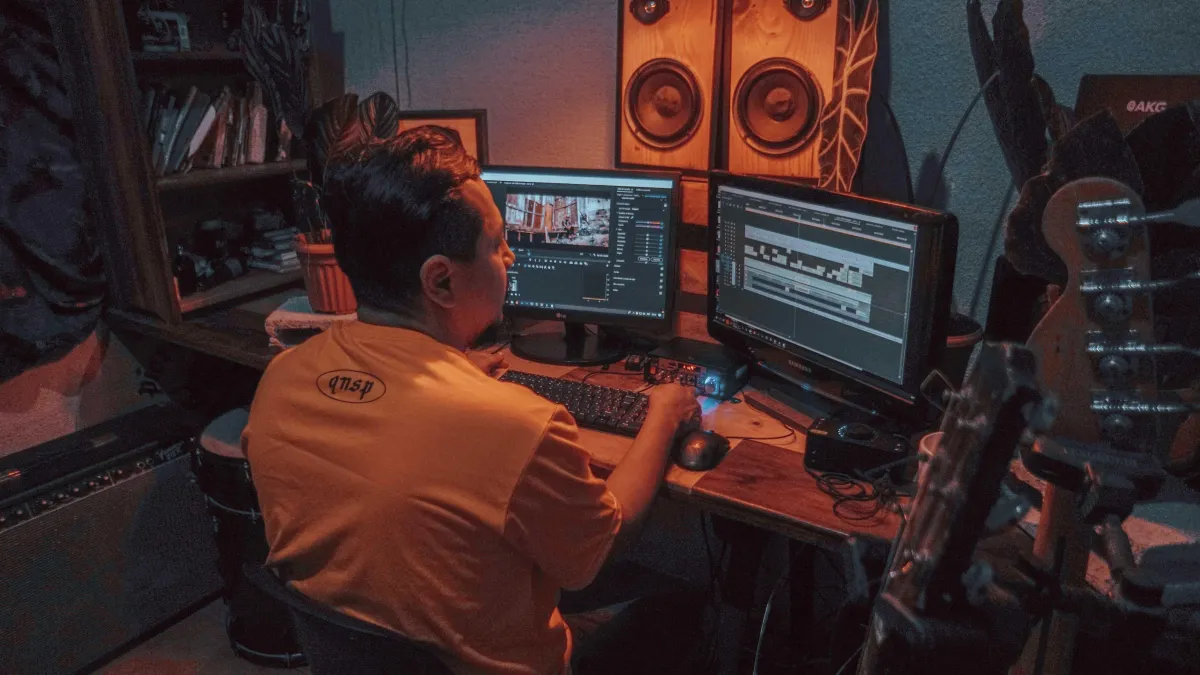Enter contests. Win big!
Your one stop shop for up-to-date online video contests! Enter to win big today!

New Contests Open NOW!
Enter these contests before it's too late!

Frame by Frame: Tips for Editing Your Film Like a Pro
Editing is the heartbeat of filmmaking, the process where raw footage transforms into a cohesive and compelling narrative. In this blog, we'll explore essential tips and techniques to edit your film like a pro, from the initial assembly of clips to the final touches that elevate your story to cinematic perfection.
Organize Your Footage:
Begin the editing process by organizing your footage systematically. Create folders for different scenes, takes, and types of shots. A well-organized project structure sets the foundation for a smooth editing workflow.
Understand the Story:
Before diving into the editing software, understand the story you want to tell. Familiarize yourself with the narrative arcs, character developments, and thematic elements. A clear understanding of the story guides your editing decisions.
Start with a Rough Cut:
Create a rough cut to establish the basic structure of your film. Focus on the sequential arrangement of scenes and the overall pacing. Don't worry about fine details at this stage; the goal is to have a working foundation for the narrative.
Master the Art of Transitions:
Transitions play a crucial role in maintaining the flow of your film. Experiment with various transitions like cuts, fades, dissolves, and wipes to seamlessly connect scenes. Be mindful of the emotional impact different transitions can bring.
Pay Attention to Pacing:
Pacing is the rhythm of your film. Adjust the timing of shots to create a dynamic flow that suits the mood and intensity of each scene. Understand when to linger on a moment and when to quicken the pace for heightened tension.
Fine-Tune with Audio:
Audio is as vital as visuals in filmmaking. Pay close attention to the quality and timing of sound effects, music, and dialogue. Ensure a balanced audio mix that enhances the emotional impact of each scene.
Experiment with Color Grading:
Color grading adds a cinematic touch to your film. Experiment with color schemes to evoke specific moods or enhance the visual consistency of your narrative. Use color grading to guide the audience's emotional response.
Refine Transitions with Cutaways:
Cutaways are brief shots inserted between scenes to provide context or emphasize details. Use cutaways to refine transitions, maintain continuity, and add layers to your storytelling.
Consider Feedback and Test Screenings:
Seek feedback from peers, mentors, or test screenings. Fresh perspectives can reveal areas for improvement and help you refine your film. Constructive criticism is invaluable in perfecting your editing choices.
Create Impactful Opening and Closing Sequences:
The opening and closing sequences leave a lasting impression. Craft an engaging opening that hooks the audience, and conclude with a memorable closing that resonates with the overarching theme of your film.
Polish with Transitions and Effects:
Once the main structure is in place, polish your film with subtle transitions and effects. Be cautious not to overuse effects; they should complement the narrative without distracting from the story.
Maintain Continuity:
Continuity is essential for a seamless viewing experience. Pay attention to details like matching eyelines, consistent lighting, and accurate placement of props to ensure visual coherence throughout your film.
Know When to Simplify:
Sometimes less is more. Know when to simplify your edit, eliminating unnecessary shots or sequences. A focused and streamlined narrative often has a more significant impact on the audience.
Finalize with Attention to Detail:
In the final stages, scrutinize every detail. Check for any inconsistencies, audio glitches, or visual artifacts. A meticulous review ensures a polished final product that meets professional standards.
Export in the Appropriate Format:
Before exporting, determine the appropriate format for your film. Consider the platform where your film will be showcased and export in a format that meets those specifications while maintaining high-quality visuals and sound.
Conclusion: Editing is the invisible art that breathes life into your film. By mastering these tips for editing like a pro, you can transform your raw footage into a cinematic masterpiece. Remember that each decision in the editing room contributes to the overall impact of your storytelling. So, dive into your editing software with confidence, refine your narrative frame by frame, and watch as your film comes to life with professional finesse.
Follow Online Video Contests
Never miss a new contest alert! Follow us on social media to stay up to date on everything OVC.



Copyright 2023 | Online Video Contests
Contact
partnerships@onlinevideocontests.com
